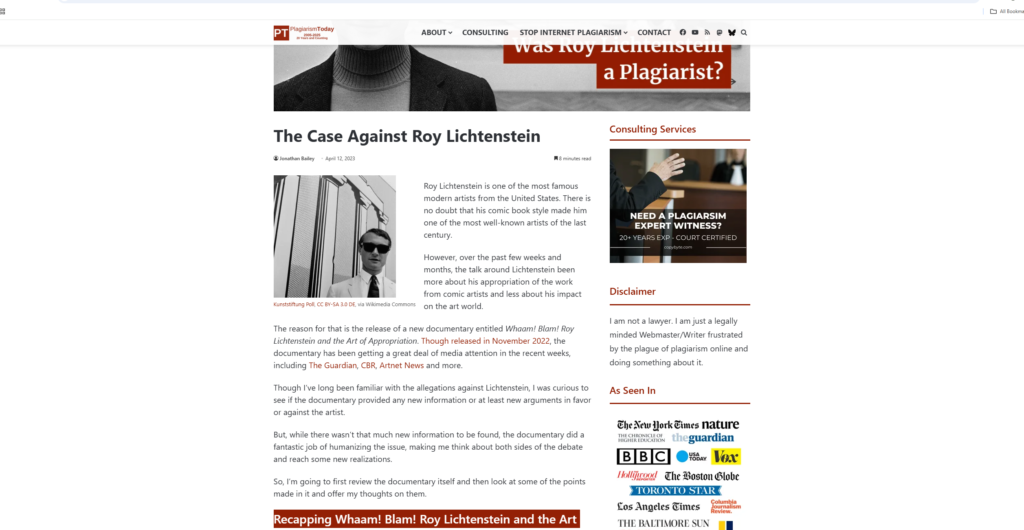
How it relates to the past…
Critics contend that Pop Art’s juxtaposition of art and everyday objects blurs the boundaries of artistic sanctity, potentially diminishing the reverence associated with high art. By integrating mass-produced imagery, the movement challenges traditional notions of artistic exclusivity.
Union can be interpreted in various ways within art specifically in terms of combining different artistic influences, cultures, or mediums. Union in art often signifies the coming together of high and low culture, or the mixing of traditional art forms with modern, consumer-based visuals.
Roy Lichtenstein is one of the key figures in American Pop Art. His use of comic book imagery, ben-day dots, and bold lines, which transforms everyday, mass-produced imagery into fine art. Mention that Lichtenstein’s work was a fusion of popular culture and art history, which directly relates to the theme of “Union.”
In terms of the historical background of Pop Art in the 1950s and 1960s, was a time of rapid industrial growth and the rise of mass media in America. Pop Art emerged as a reaction to the elitism of abstract expressionism, embracing instead the visual language of advertising, comics, and consumer culture.
Linking this to the theme of union it is emphasized how Pop Art brought together the worlds of art and commerce, merging high with low culture (advertising, comics, etc.). Lichtenstein, with his bold, graphic aesthetic, became one of the foremost artists in this movement, using visual language that was deeply connected to mass media.
Pop Art and Photography share a visual language based on consumerism, popular culture, and mass media. Photography in the 20th century became a tool to capture the realities of modern life, reflecting the increasing influence of media and consumer goods on society.
Photography as Pop Art: Pop artists, including Lichtenstein, were influenced by the emerging role of photography in capturing mass culture. Think about how photographs of advertisements, celebrities, and everyday objects became visual motifs in Pop Art.
Union of Commercial Photography and Fine Art: Many photographers like Richard Avedon, Irving Penn, and Andy Warhol (who was both a photographer and painter) he blurred the lines between commercial and fine art. Avedon, for example, elevated commercial fashion photography to art, just as Lichtenstein made comic book art better.
Pop Art Introduced…
Although British Pop Art was greatly inspired by American popular culture, it was a rather playful and ironic exploration of what American popular imagery represented and how it manipulated people’s lives and lifestyles.
To American artists, on the other hand, Pop Art meant a return to representation: hard edges, clear forms, and recognizable subject matter now reigned, contrasting with the loose abstraction and symbolism of the Abstract Expressionists.
Heavily influenced by commercial art practice, these artists were taking inspiration from what they saw and experienced directly. Not surprisingly, many had started their careers in commercial art.
Andy Warhol was a magazine illustrator and graphic designer, Ed Ruscha was a graphic designer, and James Rosenquist started out as a billboard painter. Their backgrounds provided them with an excellent visual vocabulary of mass culture as well as the technical skills to jump effortlessly between high art and popular culture and to merge the two worlds.
